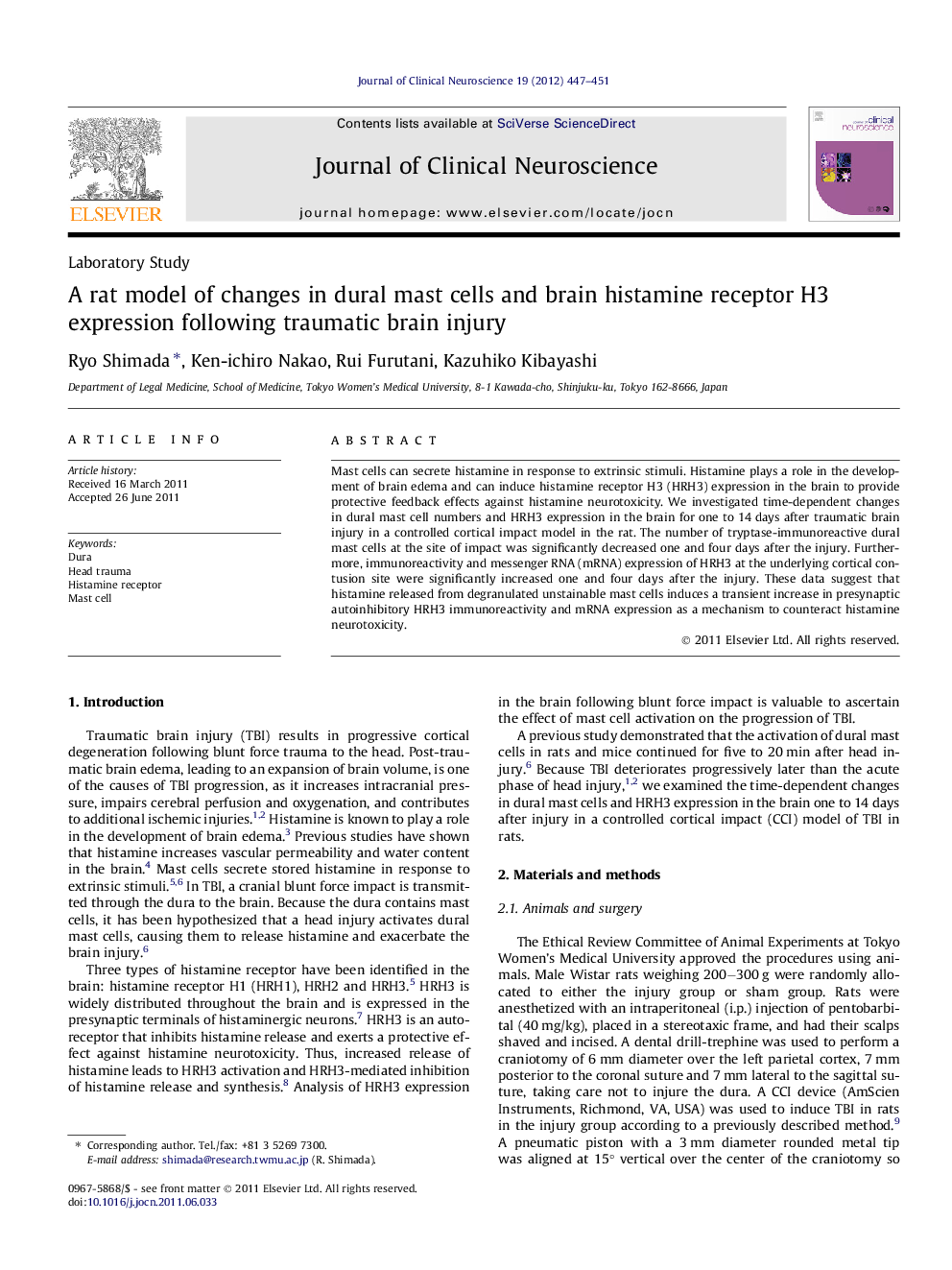| Article ID | Journal | Published Year | Pages | File Type |
|---|---|---|---|---|
| 3060943 | Journal of Clinical Neuroscience | 2012 | 5 Pages |
Mast cells can secrete histamine in response to extrinsic stimuli. Histamine plays a role in the development of brain edema and can induce histamine receptor H3 (HRH3) expression in the brain to provide protective feedback effects against histamine neurotoxicity. We investigated time-dependent changes in dural mast cell numbers and HRH3 expression in the brain for one to 14 days after traumatic brain injury in a controlled cortical impact model in the rat. The number of tryptase-immunoreactive dural mast cells at the site of impact was significantly decreased one and four days after the injury. Furthermore, immunoreactivity and messenger RNA (mRNA) expression of HRH3 at the underlying cortical contusion site were significantly increased one and four days after the injury. These data suggest that histamine released from degranulated unstainable mast cells induces a transient increase in presynaptic autoinhibitory HRH3 immunoreactivity and mRNA expression as a mechanism to counteract histamine neurotoxicity.
